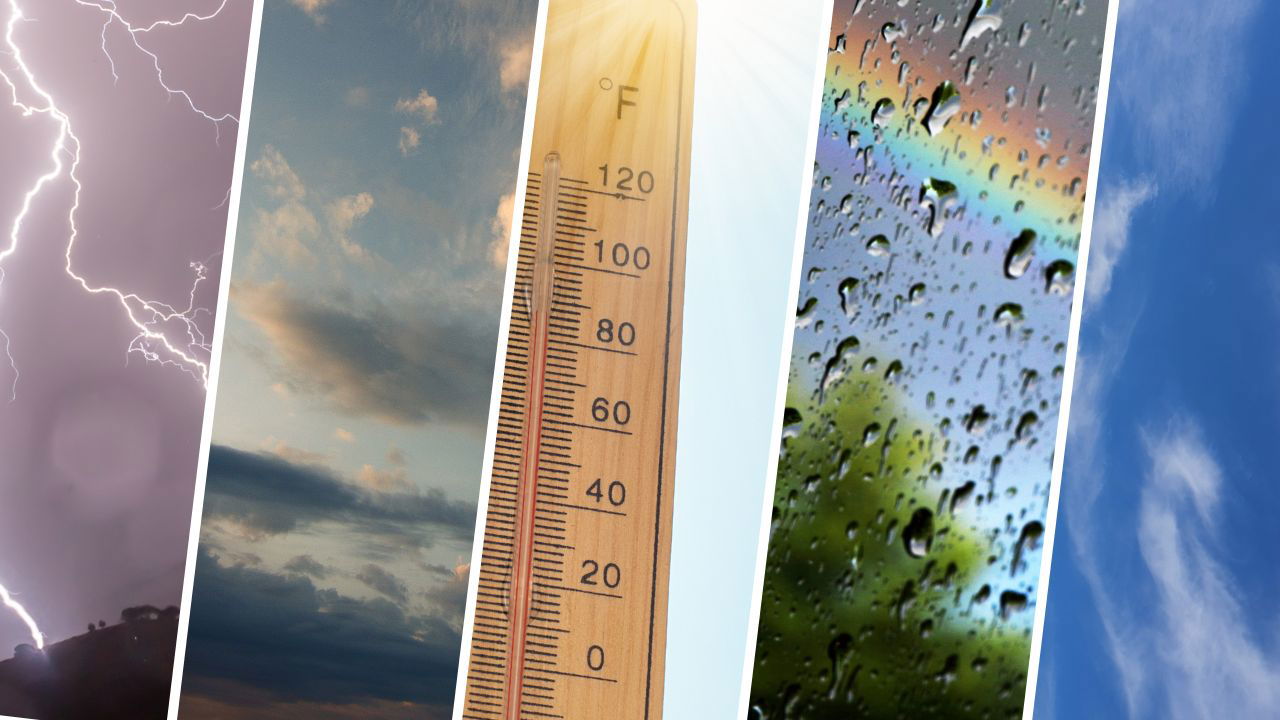
A spell of stormy weather is expected to sweep across India this week, with the IMD forecasting rain, thunderstorms, hailstorms, and even dust storms in several regions. Additionally, some parts of the country are preparing for an early heatwave. From the northern hills to the southern coastal plains, India is set to experience a variety of weather conditions in the coming days.
Widespread Rain and Thunderstorms Across North and East India
A Western Disturbance and multiple upper air cyclonic circulations are influencing weather over the northern plains and northeastern states. Due to these systems, scattered to fairly widespread rainfall is expected in Jammu & Kashmir, Himachal Pradesh, Uttarakhand, and parts of East and Northeast India.
|
Region |
Weather Type |
Dates |
|
Jammu, Kashmir, Ladakh |
Rain, Thunderstorm, Gusts |
April 12 |
|
Himachal Pradesh |
Rain, Thunderstorm, Gusts |
- |
|
Uttarakhand |
Rain, Thunderstorm, Hail |
April 12 |
|
Bihar |
Heavy Rainfall |
April 12 |
|
Assam, Meghalaya |
Heavy Rainfall |
April 12–15 |
|
Arunachal, Sikkim, Bengal |
Heavy Rainfall |
April 12 |
|
East MP, Chhattisgarh |
Thunderstorm, Hailstorm |
April 12 |
Thunderstorms and hailstorms are also likely in parts of Punjab, Haryana, Uttar Pradesh, and Chhattisgarh on April 12. Duststorms are expected in Rajasthan on the same days.
Stormy Weather in Southern States
Southern India will also witness unstable weather patterns, with rainfall and thunderstorms predicted in Kerala, Tamil Nadu, and Karnataka. Moist winds from the Arabian Sea and Bay of Bengal are feeding into a trough running from west Rajasthan to coastal Andhra Pradesh.
Rainfall Forecast for South India:
|
Region |
Forecast Type |
Duration |
|
Kerala & Mahe |
Rain, Thunderstorm, Gusty Winds |
April 12–17 |
|
Tamil Nadu, Puducherry, Karaikal |
Rain, Thunderstorm |
April 12–14 |
|
Telangana, Karnataka |
Rain, Thunderstorm |
April 12–14 |
|
Lakshadweep |
Light Rainfall |
April 12 |
|
Coastal Andhra & Odisha |
Thundersquall (50–60 kmph winds) |
- |
Thundersqualls—strong windstorms with gusts up to 60 kmph—are predicted for Coastal Andhra Pradesh, Odisha, and parts of the plains including Punjab, Haryana, and Delhi.
Temperature Dip, Then Steady Rise Expected
A brief fall in maximum temperatures by 2–3°C is likely across northwest, central, and western India in the first half of the week, followed by a steady rise by 3–5°C as the week progresses. No major temperature changes are expected in southern and eastern parts of the country.
|
Region |
Trend (Next 7 Days) |
|
Northwest India |
Fall by 2°C, then rise 3–5°C |
|
Central India |
Fall by 2°C, then rise 2–4°C |
|
West India |
Fall by 2–3°C, then rise |
|
Rest of India |
No significant change |
Heatwave and Hot-Humid Conditions Looming
With the mercury set to rise again, heatwave conditions are likely to develop over several regions towards the weekend, especially in western and northwestern India.
|
Region |
Heatwave Dates |
Remarks |
|
West Rajasthan |
April 14–17 |
Severe on April 16–17 |
|
Gujarat |
April 15–17 |
Isolated Pockets |
|
Punjab, Haryana |
April 16–17 |
Localized Heatwave |
|
East Rajasthan |
April 16–17 |
Dry and Hot |
|
Tamil Nadu & Puducherry |
April 12 |
Hot and Humid Conditions |
Delhi Weather: Thunderstorms, Rain and Mild Relief
The Delhi NCR region is expected to experience cloudy skies, light rain, and thunderstorms during April 12–14. Wind speeds may reach up to 50 kmph, giving temporary relief from heat, although temperatures will remain above normal for this time of year.
|
Date |
Weather |
Temp (Max/Min °C) |
Wind Speed & Direction |
|
April 12 |
Partly Cloudy |
35–37 / 19–21 |
10–18 kmph SE to NE |
|
April 13 |
Clear Sky |
37–39 / 19–21 |
8–14 kmph SE to NE |
|
April 14 |
Clear Sky |
38–40 / 21–23 |
6–14 kmph SE to NE |
A fall of 1–3°C in temperatures was observed in Delhi over the last 24 hours, with maximum temperatures still hovering 5°C above normal at several places.
With a variety of weather systems active across the country, IMD’s forecast highlights the need for caution in the coming days. From thunderstorms and hailstorms to rising temperatures and heatwaves, different regions will face different challenges. Citizens are urged to stay updated with local weather reports, take necessary safety measures, and farmers should safeguard their crops against adverse conditions. Staying alert and prepared is key to staying safe.
















